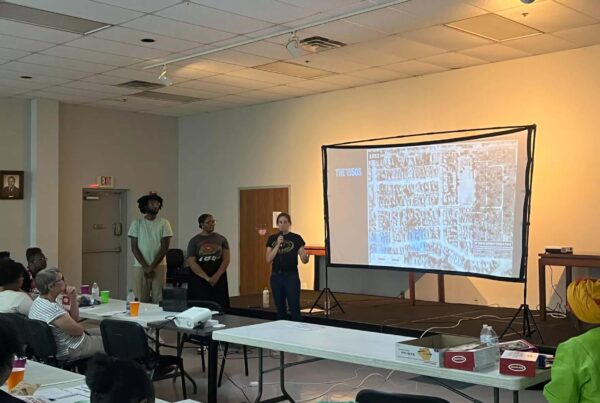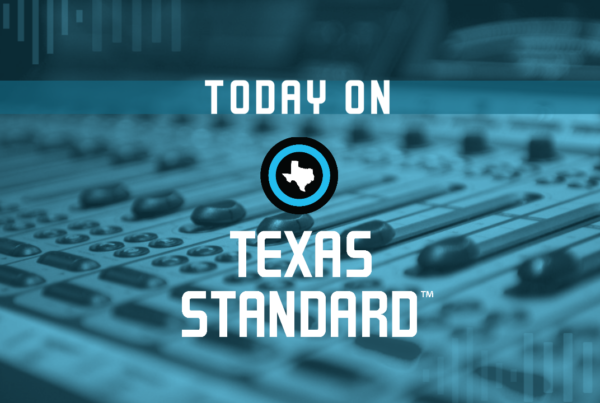Two major energy projects planned for the Rio Grande Valley suffered setbacks last week.
Rio Grande LNG and Texas LNG are liquefied natural gas terminals set to be built at the Port of Brownsville. Local groups have raised concerns about the terminal’s effect on air and water quality. Last week, a three-judge panel in Washington found that the companies behind the terminals didn’t adequately consider their environmental impact.
James Osborne, Washington correspondent for the Houston Chronicle, joined Texas Standard to discuss. Listen to the interview above or read the transcript below.
This transcript has been edited lightly for clarity:
Texas Standard: How big of a setback is this ruling for the projects involved here?
James Osborne: You know, this isn’t the first time a court is told FERC (the Federal Energy Regulatory Commission) they need to redo the environmental permitting on one of these projects. I mean, this has just become increasingly the case of these projects as they all get litigated.
And, you know, the environmental groups will go through them with a fine-tooth comb, looking for any sort of opportunity to point out mistakes or maybe areas they could have delved into more deeply.
So in all likelihood it’s probably going to delay things months, maybe up to a year – who knows? But, for now, the companies are making it out it’s not a big deal. This is sort of a pro forma matter.
Well, I know that these are not the only two LNG projects planned for the Gulf Coast. Seems to be sort of a boom right now. What’s behind the push to build these sorts of facilities?
Yeah, it’s been going on for a number of years now. I mean, there’s great demand for natural gas around the world. And typically in other countries in Asia and Europe, the prices for natural gas are much higher than they are in United States.
So when you do the math, you produce the gas in Texas and ship it overseas, it works out pretty well.
You can talk about the demand, but there’s the supply issue, too. I mean, there have been stories I’ve mentioned here on the Standard in the recent past where there’s so much natural gas that they’re having to flare it off. There’s a lot of supply right now.
Oh, there is. I mean, this has been going on for about 15 years now. The fracking revolution just brought all this gas into the U.S. market.
I mean, for a long time we had a gas shortage. We were actually importing LNG. Now, of course, we’ve gotten like a 180° from that. And now, we have so much of it. It’s produced so cheaply here.
And like you said, out in West Texas, you know, the Permian Basin is primarily interested in oil production. They’re just trying to figure out what to do with this gas. They keep building pipelines and one gets built and it’s still there. They have too much.
It seems like there’s a certain irony, though, in what the judges are saying here. I mean, because the flaring obviously causes a lot of concerns for environmentalists. And yet here the objection from this three-judge panel is that there wasn’t adequate consideration for the environmental impact of these terminals that would export the LNG.
Yeah, it’s kind of a funny situation.
Like you said, flaring is bad for the environment – puts a lot of CO2 and methane into the atmosphere. What we’re talking about here in these court cases, really, is emblematic of this ongoing debate within the federal government about how to weigh the greenhouse gas emissions of LNG.
The Federal Energy Regulatory Commission, which is the one charged with assessing all this stuff, has had huge debates internally about how to assess this, where they’ve really split along partisan lines. And at certain points in recent years, they’ve been deadlocked and not been able to move projects at all.
That’s not the case now. They’ve figured out a sort of way to move ahead on these projects where they can find bipartisan compromise. But the court has come back repeatedly and told them they’re not doing it correctly, and they’re not following the sort of procedures laid out in federal law about how you’re supposed to assess this stuff.
Figuring this out has been really tricky and sort of is constantly shifting. And it seems like it’s going to be going on that way for a little while until, maybe, the Supreme Court comes in and clears up exactly how this is supposed to be assessed.
So what’s the next shoe to drop here? What happens now?
The decision will be sent back to FERC with the judge’s instructions about what they need to do a better job. And, you know, it’ll be up to the FERC staff to go through and try to redo the environmental way in a way that will please the courts. That will then go back to the courts and the courts will say “yes” or “no” if they did a good job or not.
So it’s just sort of a matter of waiting game at this point.
















